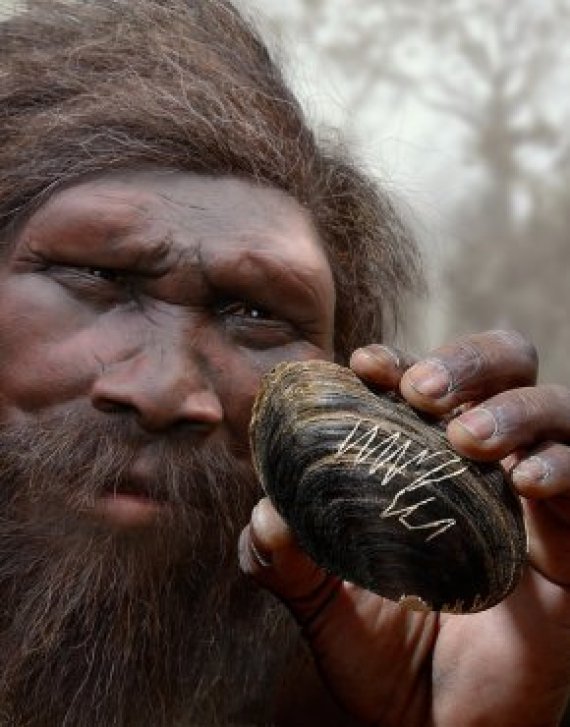A nice Dutch archaeological success. However, less attention was paid to what was possibly the most crucial part of the study: the dating of the shell. How do we know that this shell is at least 430,000 years old? That is the work of Wageningen researchers led by Professor Jakob Wallinga. Wallinga heads the Dutch Centre for Luminescence, based in Atlas, which he set up. He has been living with the secret of homo erectus for years. The zigzag scratches on the shell were discovered seven years ago by an Australian researcher. The shell is part of the Dubois collection, named after the Dutch paleontologist Eugene Dubois who discovered homo erectus. Dubois began digging up the shells in 1890 in the bed of the Javan River Solo, the place where he also found the remains of the homo erectus. Wallinga got involved in this research five years ago. ‘It was already clear then how important those scratches could be and how crucial the dating would be.’
Luminescence
Luminescence makes use of a signal which builds up in buried sand grains under the influence of natural radioactivity in the soil. Wallinga can release that signal, measure it and determine how much time has gone by since the sand was hidden from daylight. Light destroys the signal. The shells have been in Naturalis for over 100 years, but luminescence can still be used. To do so the dating team used pieces of coagulated sediment inside the shell. They scraped away the outer layer and could access the material with the intact signal to decode the ‘sand memory’. The result is spectacular. The scratches must be at least 430,000 years old. With another technique, the upper limit was set at 540,000 years. The oldest known engravings until now were those of homo sapiens in Africa, which dated back to about 100,000 years ago. Wallinga is proud of having worked on such an archaeological breakthrough. ‘This is a breakthrough in how we look at the development of humans and what steps were taken when.’ The researchers are keen to continue investigations. ‘We would love to go to the excavation site. There is much more material there. The aim is get that organized.’


